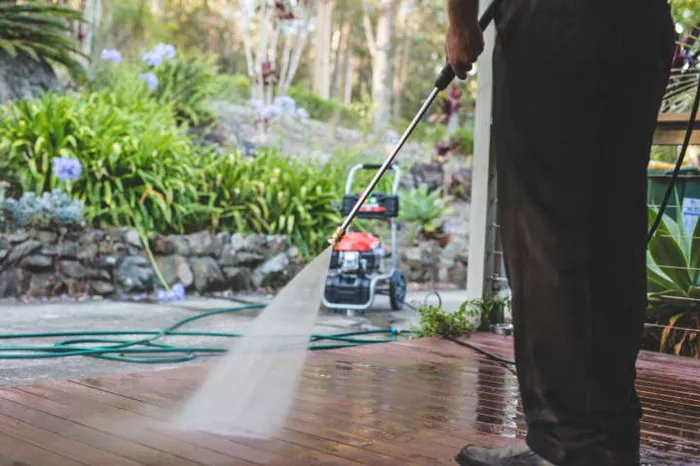Cleaning concrete surfaces effectively involves understanding the role of pressure, measured in pounds per square inch (PSI). This article explores the PSI requirements needed for different cleaning tasks on concrete, ensuring that you can achieve optimal results without damaging the surface.
What is PSI and Why is it Important?
PSI, or pounds per square inch, measures the force of water or another cleaning agent being applied to a surface. In cleaning concrete, PSI is crucial because it determines the effectiveness of the cleaning process. Higher PSI levels can remove stubborn stains and grime but may also risk damaging the surface if not used correctly. Conversely, lower PSI levels are gentler but might not be effective against tough dirt.
Factors Influencing PSI Requirements
Several factors influence the PSI needed to clean concrete surfaces effectively. These include:
Type of Stain or Dirt
- Light stains or dust can often be cleaned with lower PSI settings.
- Heavy stains, such as oil or grease, may require higher PSI to ensure thorough cleaning.
Concrete Surface Condition
- New concrete or well-maintained surfaces typically need lower PSI.
- Older or rougher surfaces might need higher PSI to remove built-up grime and dirt.
Type of Cleaning Equipment
- Pressure washers come with different PSI ratings. Selecting the appropriate equipment is essential for achieving the desired results.
Cleaning Solutions
- Using detergents or chemicals can enhance the cleaning process, sometimes allowing for lower PSI settings.
Choosing the Right PSI for Different Cleaning Tasks
General Cleaning
For routine cleaning, such as removing dust and light dirt, a PSI of 1,500 to 2,500 is usually sufficient.
This level of pressure is effective for keeping concrete surfaces clean without causing damage.
Stain Removal
For tougher stains like oil or rust, a PSI of 2,500 to 3,500 is often necessary.
Higher pressure helps to break down and remove stubborn stains more effectively.
Heavy-Duty Cleaning
In cases where concrete is heavily soiled or has not been cleaned for a long time, a PSI of 3,500 to 4,500 might be required.
This level of pressure is used for industrial cleaning tasks or in situations where the surface is extensively dirty.
Surface Preparation
When preparing a concrete surface for painting or sealing, a PSI of 3,000 to 4,000 is typically used.
This pressure helps to ensure that all residues and contaminants are removed for proper adhesion of new coatings.
See Also: Do You Understand the Power of a 4000 PSI Pressure Washer?
Advantages and Disadvantages of Different PSI Levels
Low PSI (1,500 – 2,000)
Advantages:
- Gentle on concrete surfaces, reducing the risk of damage.
- Suitable for routine cleaning and light dirt removal.
Disadvantages:
- Less effective for tough stains and heavy grime.
- May require more time and effort to achieve the desired results.
Medium PSI (2,000 – 3,000)
Advantages:
- Effective for removing a range of stains and dirt.
- Provides a balance between cleaning power and surface safety.
Disadvantages:
- Can still be too gentle for some heavy-duty cleaning tasks.
- May need additional cleaning agents for best results on stubborn stains.
High PSI (3,000 – 4,500)
Advantages:
- Excellent for deep cleaning and removing stubborn stains.
- Ideal for heavily soiled surfaces and industrial cleaning.
Disadvantages:
- Higher risk of damaging concrete surfaces if not used properly.
- Requires more careful handling and potentially additional safety measures.
Safety Considerations When Using High PSI
Using high PSI settings requires extra caution to avoid damaging the concrete or causing injury. Here are some safety tips:
Inspect the Surface
Before starting, check the concrete for cracks or weak spots. High pressure can exacerbate existing damage.
Test a Small Area
Always test the pressure on a small, inconspicuous area first. This helps to ensure that the pressure is suitable for the surface.
Maintain a Safe Distance
Keep the nozzle at a safe distance from the surface to prevent etching or gouging the concrete.
Use Protective Gear
Wear safety goggles, gloves, and long sleeves to protect yourself from debris and high-pressure water.
Follow Manufacturer Guidelines
Adhere to the manufacturer’s instructions for both the pressure washer and any cleaning solutions used.
Tips for Effective Concrete Cleaning
Choose the Right Nozzle
Different nozzles produce different spray patterns. A 25-degree nozzle is generally good for most concrete cleaning tasks.
Use Cleaning Agents Wisely
Apply appropriate cleaning solutions for specific types of stains. Ensure they are compatible with the PSI setting you are using.
Work in Sections
Clean in manageable sections to ensure even coverage and avoid missing spots.
Rinse Thoroughly
Always rinse the surface thoroughly after cleaning to remove any residue from cleaning agents or debris.
Regular Maintenance
Regular cleaning helps to prevent the buildup of stains and dirt, reducing the need for high PSI cleaning.
Conclusion
Understanding PSI requirements is essential for effective concrete cleaning. By selecting the appropriate PSI level based on the type of cleaning task, you can achieve optimal results while minimizing the risk of damage. Regular maintenance and proper cleaning techniques will ensure that your concrete surfaces remain in excellent condition over time.
For best results, always consider the factors influencing PSI needs, and follow safety guidelines to protect both the surface and yourself. With the right approach, you can maintain clean and attractive concrete surfaces for years to come.

